#albany pitcher plant
Photo

The weird world of Australia’s carnivorous plants. Australia is a hotspot for carnivorous plants, boasting more than 250 species.
Albany pitcher plant.
Image credit: Greg Bourke
#greg bourke#photographer#australian geographic#australia#carnivorous plant#plant#albany pitcher plant#nature
109 notes
·
View notes
Text

Hey look, a swan!
Painted in 2022
This is available to be printed on things at my redbubble shop
#cobra lily#albany pitcher plant#drosera#sundew#carnivorous plants#fungi#venus fly trap#trumpet plant#my art
2 notes
·
View notes
Photo

Albany Pitcher Plant (Cephalotus follicularis)
photo credit: lexsaric
#albany pitcher plant#Cephalotus follicularis#Oxalidales#eudicots#carnivorous plants#pitcher plants#plant#australia
3 notes
·
View notes
Text
Fanciful Pitchers

Albany Pitcher Plants taking it cool in the Sembcorp Cool House.
The smaller sensor with its generous depth-of-field made keeping this whole bunch of pitchers in focus an easy task.
#albany pitcher plant#cephalotus#flora and fauna#flora photography#fujifilm xs1#gardening#national orchid garden#singapore botanic gardens#unesco world heritage site#photographers on tumblr
0 notes
Photo
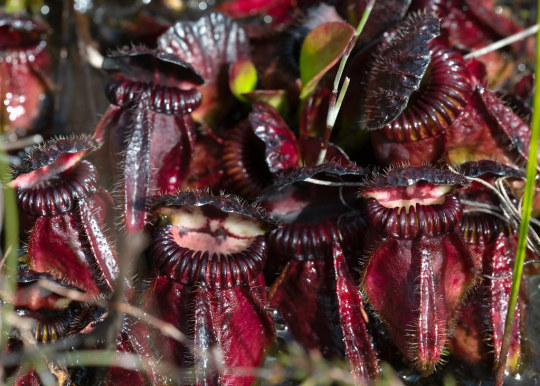
Albany pitcher plant (Cephalotus follicularis) in Western Australia
John Anderson
523 notes
·
View notes
Text


Does anyone have any tips on caring for Cephalotus? This fuzzy fella is so small I’m afraid I’ll accidentally kill him 🥺🥺
#houseplants#indoor plant#plant#plants#houseplant#indoor plants#plant enthusiast#plant lover#plantblr#carnivorous plants#plant mom#cephalotus#cephalotus follicularis#albany pitcher plant#australian pitcher plant
17 notes
·
View notes
Text
The Albany pitcher plant will straight up eat you (if you're an ant)
The Albany pitcher plant will straight up eat you (if you’re an ant)

FEED me, Seymour!
Adam Cross, Author provided
Adam Cross, Curtin University
Sign up to the Beating Around the Bush newsletter here, and suggest a plant we should cover at [email protected].
On a warm evening in early 1802, Robert Brown sat aboard the HMS Investigator describing several plant specimens collected that day. Brown was the botanist on Captain Matthew…
View On WordPress
0 notes
Photo


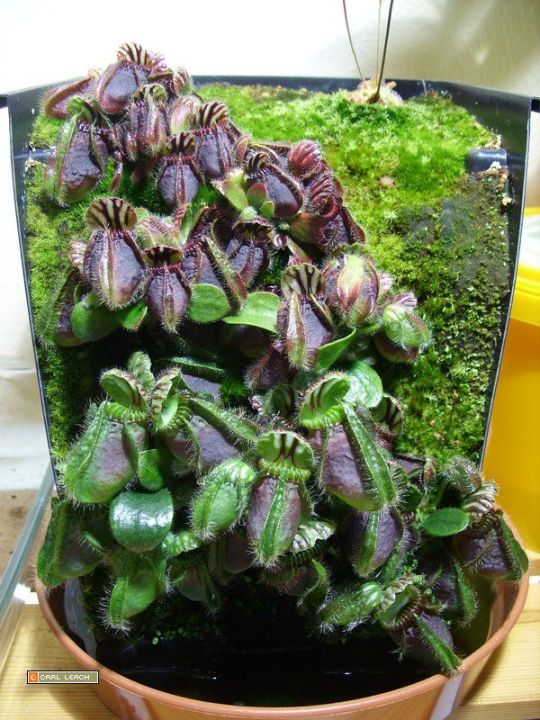
Cephalotus follicularis / Albany pitcher plant
22 notes
·
View notes
Text

Carnivorous grass-types (and skrelp) Gacha adopts!
£16 a roll, £20* to pick one! Evolution/alternate forme designs are an extra £14 each (but may vary a little for stage or complexity)
Treecko/Nepenthes - sold
Applin/Cephalotus - open
Morelull/Drosophyllum - sold
Skrelp/Utricularia - open
Steenee/Sarracenia - sold
Ivysaur/Pinguicula - sold
Leafeon/Heliamphora - sold
Lurantis/Drosera - sold
Serperior/Darlingtonia - sold
Meganium/Drosera - sold
Calyrex/Byblis - sold
Shaymin/Dionaea - open
DM if interested and i’ll shoot you paypal details! You’ll get a full-res unwatermarked image of your design.
more specific Plant Info under the cut because i evidently put more thought into this than i should have:
Tropical pitcher plant/”Monkey cup”, Nepenthes ventricosa
Albany pitcher plant, Cephalotus follicularis
Dewy pine, Drosphyllum lusitanicum
Bladderwort, Utricularia vulgaris
North American pitcher plant, Sarracenia purpurea
Butterwort, Pinguicula moranensis
Sun pitcher plant, Heliamphora nutans
Cape sundew, Drosera capensis
Cobra lily, Darlingtonia californica
Rosette sundew, Drosera natalensis
Rainbow plant, Byblis liniflora
Venus flytrap, Dionaea muscipula
cool/interesting facts about each plant free with purchase (if wanted :))
#adoptables#adopts#pokemon adopts#pokemon adoptables#pokemon oc#pokemon#hope the prices are ok;; i worked hard on these hdghdfgvhdf#i think cobra lily serperior is my favourite#that or butterwort ivysaur#enjoy!!#i left the exact type of plant and scientific name under the cut in case Plant Research is going to be done which i encourage#carnivorous plants are. so cool.#these will also be all going up on toyhou.se for the instabuy price#will keep this post as updated as possible!#and now i take a break from art for a few days bc my wrist hurts and also exams#oof
39 notes
·
View notes
Text
plants plants plants
So I bought a bunch of new carnivorous plants this week and what better way to try to kickstart this blog than by filling it with plants?? Certainly beats the poor life choice rambles that filled it while I was struggling with, well, a rather weird period of my life last year.
So, without further ado, PLANTS!

First up, my Darlingtonia! I only bought it this week, so I've yet to see how well it copes with my standard setup but I'll be moving in with my nan in less than a week so I can always do a rejig there! If worst comes to the worst I'll have to climate control my bedroom for it, but hopefully temperatures will sufficiently fluctuate naturally
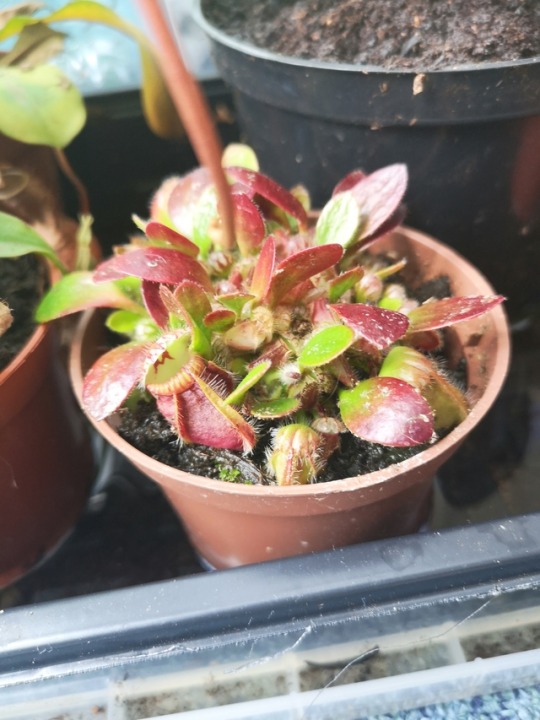
Next up, Cephalotus follicularis! A neat little find at the same place I found the Darlingtonia! I'll admit that although I'd seen pictures of Cephalotus before, I'd never realised just how rare they really were. Conservation status Vulnerable, they're found in a small region around the town or Albany, Australia, hence their common name of Albany pitcher. Like the Darlingtonia, it's a slightly more challenging species to grow compared to my usual Sarracenia so it'll be interesting to see if it copes with the current setup, or if it'll need some special treatment. I'm hoping that after having being grown in an open greenhouse in the heart of Wales they'll be at least somewhat hardy!


Utricularia! The pot on the left shows the foliage, the tiny green leaves between the moss, and the one on the right shows the flowers! The nursery I got these from were selling two species, so I'm hoping I've managed to grab one of each, but I won't know until the left one flowers!

Sarracenia flava! I absolutely love the lid shape on this one. That is all.

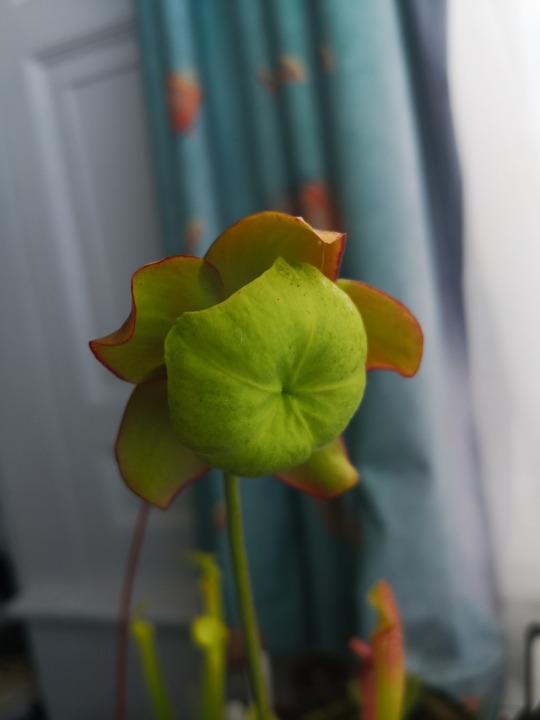
A Sarracenia "hybrid" which appears to be a purperae in the same pot as Something Else (you can see the two different types of leaves). Funnily enough I didn't notice until I got it home, and actually bought it because it was flowering, signifying the plant is at least five years old! Unfortunately I have no clue which of the two is actually five years old
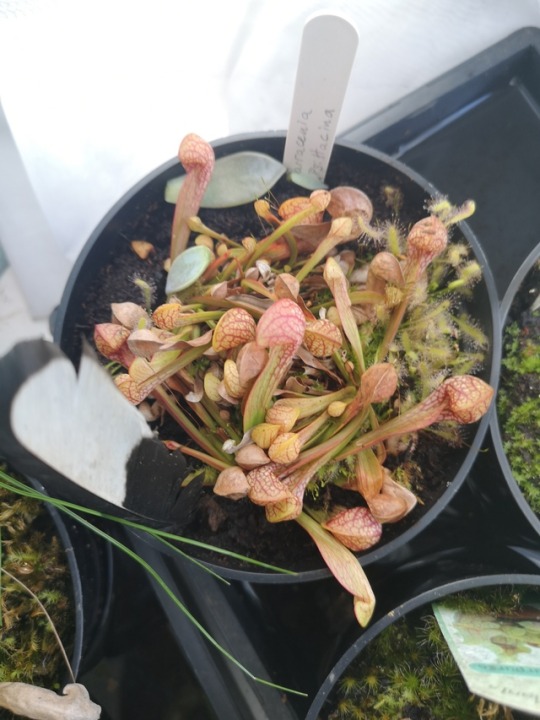
And finally, Sarracenia psittacina, with a bunch of little sundews! Needs a bit of a trim!
#plant#carnivourous plant#Sarracenia#cephalotus#darlingtonia#pitchers#sundew#plant blog#carnivorous plants#utricularia
20 notes
·
View notes
Text
Carnivorous Plant Classes
Fighter: Nepenthes rajah

Barbarian: Venus Flytrap

Paladin: Brocchinia reducta

Rogue: Albany Pitcher Plant

Ranger: Powdery Strap Airplant

Bard: Rainbow Plant (Byblis linflora)

Wizard: Drosophyllum lusitanicum

Sorcerer: Villose Pitcher Plant

Warlock: Greater Bladderwort

Cleric: Drosera derbyensis
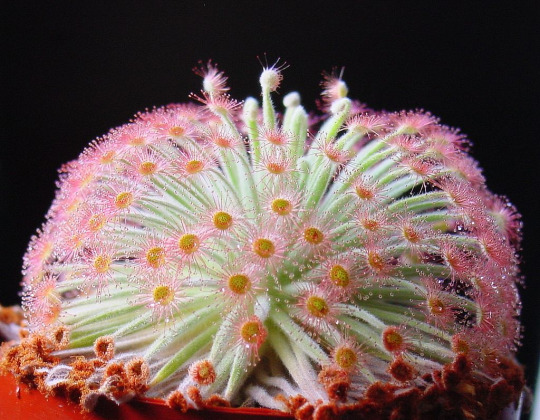
Monk: Waterwheel Plant

Druid: California Pitcher Plant

39 notes
·
View notes
Note
Does that advice for fly traps go for pitcher plants too or,,, because my brother has a dying pitcher plant and I hate seeing it look so sad
Depends on the type of pitcher plant TBH. Mostly, the rules of bright light, pure water, and nutrient poor soil apply as far as I know, but there may be variations. I’ve only ever grown sarracenias myself.
For specifics, there are five main varieties of pitcher plant, some of which include a few different species…
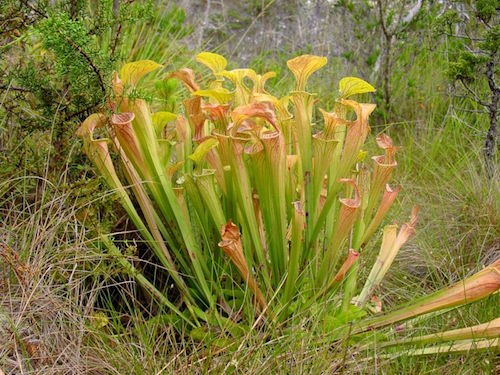
Sarracenias (trumpet pitchers) are North American temperate swamp plants. Some species can grow surprisingly tall. Follow the same rules as for venus flytraps and they’ll do fine. These are one of the most common pitchers kept as houseplants.

Nepenthes are tropical forest plants, sometimes called monkey cups. They grow big and often look very pretty, but do best in warmer and more humid conditions, and usually like to hang downwards. They don’t experience winter in the wild, so don’t go dormant. These are the other most common variety – there are a lot of nepenthes species with wildly varying appearances, including some which are large enough to catch mice.

Darlingtonia (cobra lillies) are an unusual and distinctive kind of pitcher which are native to California. They’re really difficult to grow. In the wild, they live along mountain streams, so they like warm climates but do best if their roots are kept in cold water. There’s only one known species of these.

Cephalotus (Albany pitchers) are native to Australia. I’m afraid I don’t know very much about them, but they should manage in the same conditions as sarracenias. I think they prefer sandy soil? There’s also only one known species of these.

Heliamphora (Sun pitchers) come from South America near the equator, mostly around Venezuela and Brazil. They don’t really have any seasonal changes, but some heliamphora species grow naturally at high altitude and like cooler temperatures.
109 notes
·
View notes
Text
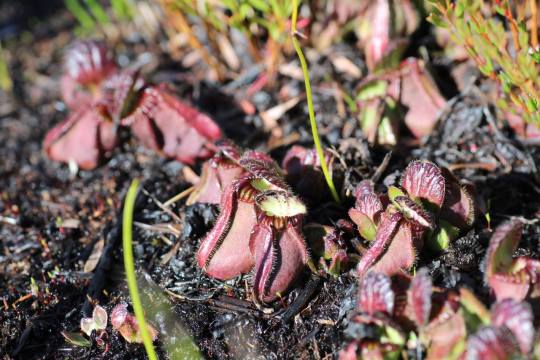
Cephalotus follicularis
The albany pitcher plant is a unique carnivorous plant that lives on peaty slopes above swamps in Western Australia. it's puts on magnificent displays shortly after fires when it takes advantage of the extra light to produce much larger leaves and many more pitchers than normal.
They also get some lovely colour varitions from green to red to near black in response to sunlight
2 notes
·
View notes
Photo

Only 2 pages left to design! Pending unforeseen catastrophes this colouring book will be finished by the end of the week! Here is the Golden Bell tree frog with the carnivorous Albany pitcher plant, and a Bearded Dragon with Blue Dampiera flowers. https://ift.tt/2VfeFf4
0 notes
Note
Happy birthday :D glad you got your nepenthes pokedex *confetti emojis*
thank!!!!! i love them they are good and also have cephalotus in them bc even though they are not technically nepenthes (evolved independently; also, Cephalotus is the last surviving member of it’s genus. like all of its relatives are extinct and Cephalotus follicuarus - the Albany Pitcher plant- that we know and love is the last living plant in the genus, making it what we call a monotypic genus, which is very rare) they are included bc they are loved and cared for as well and i appreciate this. they also have the other pitcher plants (like sarracenia and stuff) but i love my fuzzy beach babs
#they have a whole chapter to themselves!!!!!!#i love my fuzzy ocean babies#plont asks#books#asks#queue#Anonymous
29 notes
·
View notes
